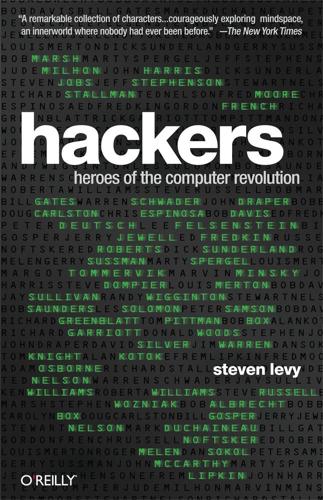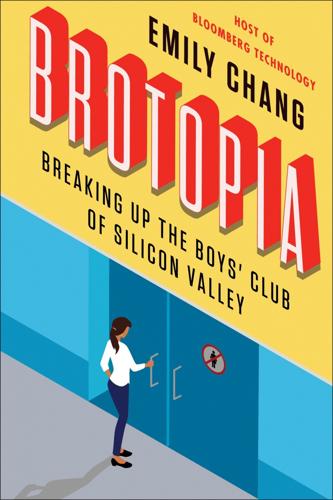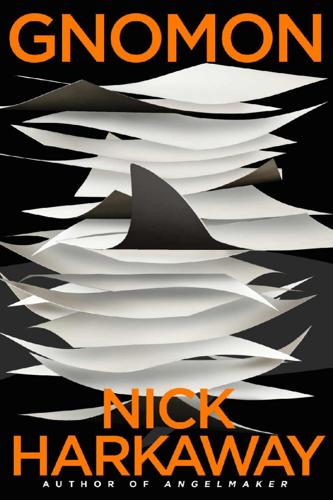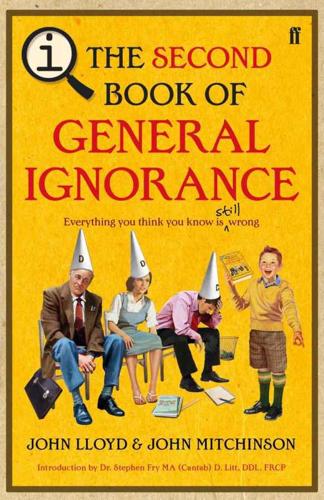
Digital Apollo: Human and Machine in Spaceflight
by
David A. Mindell
Published 3 Apr 2008
Four group oral history interviews conducted under the History of Recent Science and Technology (HRST) project on the World Wide Web are referenced in the text as follows: HRST1 (Apollo Guidance Computer) Ramon Alonso, Dan Lickly, Joe Gavin, David Hoag, Cline Frasier, Eldon Hall, Margaret Hamilton, Fred Martin, group oral history interview by David Mindell, Alexander F. Brown, and Slava Gerovitch, Cambridge, Mass., July 27, 2001. HRST2 (Software and Simulation) Alex Kosmala, Jim Miller, Herb Thaler, Ramon Alonso, Margaret Hamilton, Dan Lickly, Fred Martin, group oral history interview by David Mindell, Alexander F. Brown, and Slava Gerovitch, Cambridge, Mass., September 14, 2001.
…
Lickly remembered ‘‘a very privileged position,’’ as the programmers regularly received visits not only from astronauts, but also from von Braun and the top NASA management, ‘‘all those people we got to talk to as a small sort of elite organization.’’11 Some IL engineers never found such creative excitement again in their careers. Apollo software would be the product of many people’s work, integrated into a coherent whole. Martin’s group had physicists and mathematicians and engineers, ‘‘probably had a literature major here and there too,’’ he said, but no computer scientists. As few people were coming out of school with computer science degrees (MIT did not even create its department as part of electrical engineering until 1968), the IL group included people like Alex Kosmala and Margaret Hamilton. Hamilton, one of the few women engineers in all of the Apollo program, had a mathematics degree and had already worked as a programmer on the SAGE air defense system at MIT’s Lincoln Labs.
…
A number of Apollo participants generously gave their time for a series of group oral history interviews: Ramon Alonso, Dave Bates, Hugh Blair-Smith, Ed Blondin, Herb Briss, Ed Copps, Ed Duggan, Cline Frasier, Joe Gavin, John Green, Eldon Hall, Margaret Hamilton, David Hanley, David Hoag, Alex Kosmala, Dan Lickly, Fred Martin, Jim Miller, John Miller, Jack Poundstone, Herb Thaler, and Bard Turner. While writing this book I created a course at MIT, ‘‘Engineering Apollo: The Moon Project as a Complex System,’’ as an exploration of the project from numerous angles, from management techniques to software, from presidential policy to press coverage. I’ve been fortunate to teach in collaboration with Professor Larry Young from whom I have learned a great deal.

Hackers: Heroes of the Computer Revolution - 25th Anniversary Edition
by
Steven Levy
Published 18 May 2010
He then proceeded to reassemble the machine to an apparent pristine state. The machine was taken through its paces by the hackers that night, and worked fine. But the next day an Officially Sanctioned User named Margaret Hamilton showed up on the ninth floor to work on something called a Vortex Model for a weather-simulation project she was working on. Margaret Hamilton was just beginning a programming career, which would see her eventually in charge of onboard computers on the Apollo moon shot, and the Vortex program at that time was a very big program for her. She was well aware of the hackers’ playfulness around the ninth floor, and she was moderately friendly with some of them, even though they would eventually blend into one collective personality in her memory: one unkempt, though polite, young male whose love for the computer had made him lose all reason.
…
They had never even considered the possibility that the DECAL assembler accessed the instruction code in a different manner than MIDAS, a manner that was affected to a greater degree by the slight forward voltage drop created by the addition of two diodes between the add line and the store line. Margaret Hamilton, of course, was unaware that the PDP-1 had undergone surgery the previous night. So she did not immediately know the reason why her Vortex program, after she fed it in with the DECAL assembler . . . broke. Stopped working. Died. Mysteriously, a perfectly good program had bombed. Though programs often did that for various reasons, this time Margaret Hamilton complained about it, and someone looked into why, and someone else fingered the Midnight Computer Wiring Society.
…
She was well aware of the hackers’ playfulness around the ninth floor, and she was moderately friendly with some of them, even though they would eventually blend into one collective personality in her memory: one unkempt, though polite, young male whose love for the computer had made him lose all reason. The assembler that Margaret Hamilton used with her Vortex program was not the hacker-written MIDAS assembler, but the DEC-supplied DECAL system that the hackers considered absolutely horrid. So of course Nelson and the MCWS, when testing the machine the previous night, had not used the DECAL assembler. They had never even considered the possibility that the DECAL assembler accessed the instruction code in a different manner than MIDAS, a manner that was affected to a greater degree by the slight forward voltage drop created by the addition of two diodes between the add line and the store line.

12 Bytes: How We Got Here. Where We Might Go Next
by
Jeanette Winterson
Published 15 Mar 2021
It was Grace Hopper who pulled a moth out of Harvard’s malfunctioning room-sized computer back in 1947 and who wrote in her notes, ‘First actual case of bug being found.’ And the first time a computer glitch was called a bug. The term ‘debugging’ soon followed. Women have a way with words. Margaret Hamilton, who headed the 350-person team that developed the software system for the Apollo 11 project, coined the term ‘software engineer’ to describe her work role. It hadn’t been described before because it hadn’t been done before. * * * Thanks to movies like Hidden Figures, the world is now more aware of the role played by women in the early years of computing, and crucially in the Space Programme.
…
In the UK, the Royal Society, which calls itself a fellowship of the most distinguished scientists in the world, was founded in 1660 and started admitting women 75 years ago. Would-be Fellows (who might be women) have to be nominated by two existing fellows (who are probably men). It’s not hard to do the gender-maths here. We are only recently learning about Ada Lovelace, Grace Hopper, Katherine Johnson, Margaret Hamilton, Stephanie Shirley, the women at Bletchley Park. Listening to the ahistorical, fact-free-free-speech ‘heroes’ telling us that women just don’t want to, or just can’t manage, computing science, edits out of history – factual history – the predominance of women working in computing science, right up until they were socially engineered out of it
…
And then they got smaller and smaller and smaller, like something out of the genie world. So small that your iPhone 12 has 11.8 billion of them. * * * I think that needs a pause. 6 transistors on the 1957 Sony portable TR-63. 11.8 billion in your hand right now. * * * But in between then and now, quite a bit has happened – including the moon landing. In 1969 Apollo 11 landed on the moon. Michio Kaku, theoretical physicist and author, put it like this: ‘Today, your cell phone has more computer power than all of NASA back in 1969, when it placed two astronauts on the moon.’ That doesn’t mean your phone can fly you to the moon – but it is a useful comparison when thinking about the exponential increase in computing capacity in such a small amount of time

Brotopia: Breaking Up the Boys' Club of Silicon Valley
by
Emily Chang
Published 6 Feb 2018
She also took a collaborative approach: Ibid., 117. many different machines could understand: Ibid., 93. machines should be able to work well together: Ibid., 117. women to study math: Ibid., 88. A woman, Margaret Hamilton: Robert McMillan, “Her Code Got Humans on the Moon—and Invented Software Itself,” Wired, Oct. 13, 2015, https://www.wired.com/2015/10/margaret-hamilton-nasa-apollo. the term “programmer”: Rose Eveleth, “Computer Programming Used to Be Women’s Work,” Smithsonian, Oct. 7, 2013, https://www.smithsonianmag.com/smart-news/computer-programming-used-to-be-womens-work-718061.
…
But when the ENIAC was introduced in the press in 1946, these six critical women were not mentioned or photographed. (If you saw the movie Hidden Figures, you get the idea.) In 1962, three black women working as NASA mathematicians helped calculate the flight paths that put John Glenn into orbit. A woman, Margaret Hamilton, also headed up the team that wrote the code that plotted Apollo 11’s path to the moon. At the time, the term “programmer” had the negative connotation of referring to women’s work. That’s because computers still involved a lot of manual, mechanical labor that was less like doing higher mathematics than like running a telephone switchboard.

Human Frontiers: The Future of Big Ideas in an Age of Small Thinking
by
Michael Bhaskar
Published 2 Nov 2021
And of course, it all helped power the falling cost of computational capacity – computing's rapid take-off was underwritten by federal grants and the Department of Defense as the anchor customer in the postwar decades. At one stage the Apollo programme and its computing partner, the MIT Instrumentation Laboratory, was buying 60 per cent of all chips manufactured in America, an invaluable industry boost when demand elsewhere was only nascent. The lab's Software Engineering Division, under Margaret Hamilton, which developed on-board software for the missions, was pivotal in establishing the field.19 In the fifty years after 1951, this welter of innovation contributed to over half of America's economic growth.20 Research demonstrates the value of Office of Scientific Research and Development (OSRD) contracts in the war (there were over 2000 of them, producing 7000 inventions, 2700 patents and 2500 papers): the epicentres of postwar industrial growth and R&D had received such grants.21 So significant was this investment that the same clusters continue to shape the innovation and economic geography of the US – and the world – to this day.
…
The Airbus A380 was heralded as a revolution; it's a great plane with countless small improvements. But really it's just a big (and now discontinued) passenger aircraft. The last time anyone walked on the moon was 1972, after just six lunar missions. The fastest anyone has ever travelled was on the Apollo 10 mission – back in 1969. Bases on the moon and Mars remain the province of science fiction. Humanity goes no further than Yuri Gagarin did. If you showed today's satellites, the International Space Station and atmosphere-grazing space-tourism pods to a child in the 1960s, they would be gravely disappointed.
…
The results of Bush's vision were dramatic. In cash terms alone it's difficult to find a historical comparison. Between 1940 and 1964, driven by an animating purpose, American federal R&D funding increased twentyfold.16 It was a river of ‘endless money’. There were 130,000 people working on the Manhattan Project alone. The Apollo missions were five times as expensive, consuming 2.2 per cent of federal expenditure at their peak. A plethora of new bodies supported this work: 1958 alone saw the introduction of NASA and of DARPA, the Defense Advanced Research Projects Agency, responsible among other things for the Internet, as well as playing a part in the development of GPS, drones, stealth technology, flat screens and better artificial limbs.

Site Reliability Engineering: How Google Runs Production Systems
by
Betsy Beyer
,
Chris Jones
,
Jennifer Petoff
and
Niall Richard Murphy
Published 15 Apr 2016
They are people who stand on the cusp between one way of looking at the world and another one: like Newton, who is sometimes called not the world’s first physicist, but the world’s last alchemist. And taking the historical view, who, then, looking back, might be the first SRE? We like to think that Margaret Hamilton, working on the Apollo program on loan from MIT, had all of the significant traits of the first SRE.5 In her own words, “part of the culture was to learn from everyone and everything, including from that which one would least expect.” A case in point was when her young daughter Lauren came to work with her one day, while some of the team were running mission scenarios on the hybrid simulation computer.
…
We very much appreciate the thoughtful and in-depth feedback that we received from external reviewers: Andrew Fong, Björn Rabenstein, Charles Border, David Blank-Edelman, Frossie Economou, James Meickle, Josh Ryder, Mark Burgess, and Russ Allbery. We would like to extend special thanks to Cian Synnott, original book team member and co-conspirator, who left Google before this project was completed but was deeply influential to it, and Margaret Hamilton, who so graciously allowed us to reference her story in our preface. Additionally, we would like to extend special thanks to Shylaja Nukala, who generously gave of the time of her technical writers and supported their necessary and valued efforts wholeheartedly. The editors would also like to personally thank the following people: Betsy Beyer: To Grandmother (my personal hero), for supplying endless amounts of phone pep talks and popcorn, and to Riba, for supplying me with the sweatpants necessary to fuel several late nights.
…
So instead of adding error checking code, Margaret updated the mission specifications documentation to say the equivalent of “Do not select P01 during flight.” (Apparently the update was amusing to many on the project, who had been told many times that astronauts would not make any mistakes—after all, they were trained to be perfect.) Well, Margaret’s suggested safeguard was only considered unnecessary until the very next mission, on Apollo 8, just days after the specifications update. During midcourse on the fourth day of flight with the astronauts Jim Lovell, William Anders, and Frank Borman on board, Jim Lovell selected P01 by mistake—as it happens, on Christmas Day—creating much havoc for all involved. This was a critical problem, because in the absence of a workaround, no navigation data meant the astronauts were never coming home.

Gnomon
by
Nick Harkaway
Published 18 Oct 2017
‘Millions of them, in theory. Or one enormous one. Or one small one and a lot of places to hide it. But as I understand it, she wasn’t about hiding the message, was she? “Bugger you” would appear to be her drift. I saw a picture of her house, though. Very nice. All dishevelled and folksy, Greenham Common as styled by Margaret Hamilton. Just how I like my girls.’ Tubman is married, to a stern and fashionable Venezuelan doctor whom he adores. The Inspector rolls her eyes at him: get on with it. ‘No, all right. It could be something like that, steganography, cryptography, all the naughty toys. I’d have said not. I mean, what’s the point?
…
Something she would never have recognised if she had not had it shown to her. The simplest obfuscation, and the oldest, where what is sought is all the time hiding in plain sight. Core rope memory. Hunter’s doors are hung with keys. Or rather, just one key: the key to Firespine. She remembers Lönnrot’s hand on the frame of the picture of Margaret Hamilton. She should have known, and she would have, but there was just so much going on, informational overload being Hunter’s métier. Steganography is all around you. Why? Why reveal and then erase? Because Hunter’s plan required that Neith not only know this, but know it at exactly the right time, must be this version of herself who would not turn it over to the Fire Judges, but use it as Hunter intended.
…
I was no longer used to waiting, and the question came out of me, curious rather than aggressive, before I could remember where I was. ‘With whom?’ A whisper of a smile flicked across the lined face. ‘Immediately before you, he is meeting with an anteater.’ I suggested shyly that I had misheard. ‘Not at all. The anteater was a gift from Apollo Milton Obote of Uganda. It is an important appointment.’ I thought for a moment he was making a joke, but his face seemed to warn me against asking, and I realised that here, more than anywhere else, our conversation must be overheard and recorded. After a moment longer, he smiled. ‘To meet with the Emperor in person – in private – is a remarkable thing, Berihun Bekele.

QI: The Second Book of General Ignorance
by
Lloyd, John
and
Mitchinson, John
Published 7 Oct 2010
The Wizard of Oz was only the second film made in Technicolor and the new process made some colours easier to render than others. It took the art department over a week to come up with a yellow for the Yellow Brick Road that didn’t look green on screen. The new technology made the six-month shoot hazardous for the actors. The lights heated the set to a stifling 38 °C and eventually caused a fire in which Margaret Hamilton (the Wicked Witch of the West) was badly burned. The cast had to eat liquidised food through straws because their thick colour face make-up was so toxic. The original Tin Man, Buddy Ebsen, nearly died from inhaling the aluminium powder it contained and had to leave the film. Lyman Frank Baum died in 1919, long before his book made it to the screen, although he ended his days in Hollywood as a film producer.
…
(By law, Roman prostitutes had to wear a yellow wig as a badge of their profession.) Wigs continued to be worn after Rome became Christian in AD 313) but the Church soon condemned them as a mortal sin. The tradition of a laurel wreath being given to the victor began at the Pythian Games in Delphi in the sixth century BC. These were held in honour of the god Apollo, usually portrayed wearing a wreath of laurels in memory of the nymph Daphne, who turned herself into a laurel tree to escape his amorous advances. As well as indicating victory, the laurel had a reputation as a healing plant, so doctors who graduated also received a laurel wreath. This is the origin of the academic expressions baccalaureate, Bachelor of Arts (BA) and Bachelor of Science (BSc).

Coders: The Making of a New Tribe and the Remaking of the World
by
Clive Thompson
Published 26 Mar 2019
With male hackers sleeping in the lab at night, the environment trended toward that of an all-guy dorm. The tinkering culture of the hackers, too, could collide with that of MIT’s computer scientists, who were trying to use the machines to get important research work done. One of the latter was Margaret Hamilton, a young MIT coder who would later become a famous programmer engineering mission-critical NASA systems, helping to land Apollo missions safely on the moon. Back in those early MIT days, she was trying to run a weather-simulation model, but it kept on crashing. Why? Eventually Hamilton learned it was because the hackers had rejiggered the computer’s assembler to suit their desires and hadn’t switched it back.